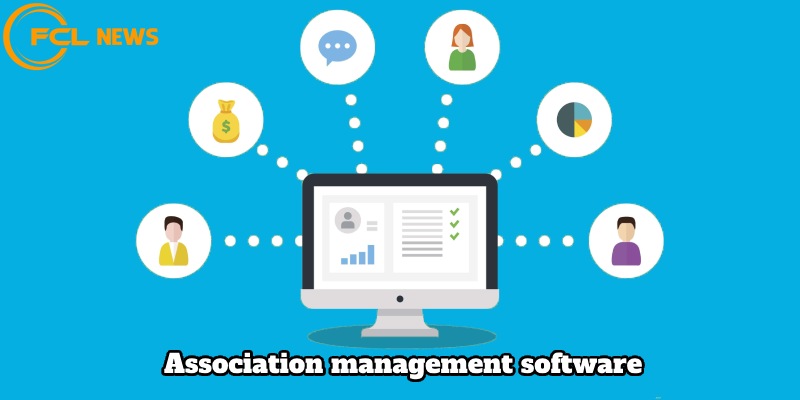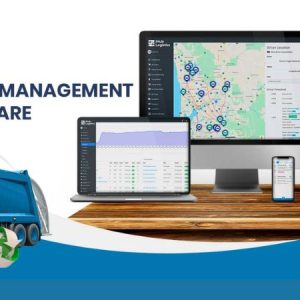Association management software has become an indispensable and important tool. Let’s delve deeper into this concept and the advantages it brings to the management of associations and non-profit organizations.
What is association management software?
Association management software (AMS) is a specialized type of software designed to assist organizations, typically non-profits, trade associations, and professional societies, in managing their memberships, events, finances, communications, and other administrative tasks. It serves as a centralized platform to streamline and automate various aspects of association management, enabling more efficient operations and better member engagement.

Key features of association management software often include membership management, which involves tracking member information, dues payments, and membership renewals. It also typically includes event management functionalities, allowing organizations to plan, promote, and execute events such as conferences, seminars, and workshops.
Additionally, AMS may include financial management tools for tracking income, expenses, and budgeting, as well as generating invoices and financial reports. Communication tools are also integral, facilitating interactions with members through email, newsletters, and social media integration.
Overall, association management software plays a crucial role in enhancing the effectiveness and productivity of associations by providing them with the tools they need to efficiently manage their operations and engage with their members.
Benefits of using association management software
Using association management software offers several benefits to organizations, including:
Efficiency
AMS automates many administrative tasks, such as membership renewals, event registrations, and payment processing, saving time and reducing manual effort. This allows staff to focus on more strategic activities rather than repetitive administrative tasks.

Centralized Data Management
AMS serves as a centralized database for member information, event details, financial records, and communication history. Having all relevant data in one place improves data accuracy, accessibility, and consistency across the organization.
Improved Member Engagement
Association management software provides tools for personalized communication, member directories, and online communities, enhancing member engagement. It enables targeted communication based on member interests, preferences, and demographics, fostering stronger relationships between the organization and its members.
Enhanced Member Experience
AMS offers self-service features such as online member portals and event registration systems, making it easier for members to interact with the organization and access resources. This improves the overall member experience by providing convenient and user-friendly services.
Financial Management
AMS streamlines financial processes such as dues collection, invoicing, and reporting. It provides real-time visibility into financial data, helping organizations make informed decisions and maintain financial stability.
Event Management
AMS simplifies the planning, promotion, and execution of events, from small meetings to large conferences. It offers features such as online registration, attendee management, session scheduling, and event marketing, ensuring smooth event operations and maximizing attendance.
Data Analytics and Reporting
Association management software generates detailed reports and analytics on various aspects of the organization, including membership trends, event performance, and financial health. These insights enable organizations to identify opportunities for growth, assess the effectiveness of their initiatives, and make data-driven decisions.
Scalability and Flexibility
AMS solutions are scalable and adaptable to the evolving needs of organizations, whether they are small associations or large enterprises. They offer customizable features and configurations to accommodate specific requirements and workflows.

Necessary features of association management software
Association management software (AMS) typically includes a range of features tailored to the specific needs of associations and similar organizations. Some necessary features of AMS include:
Membership Management
Member database: Centralized storage of member information including contact details, membership status, and history.
Membership dues tracking: Automated tracking of membership fees, renewals, and payments.
Member communication tools: Email communication, newsletters, and personalized messaging to engage with members.
Member directory: Online directory for members to connect with each other and access member profiles.
Event Management
Event registration: Online registration forms for events, conferences, and meetings.
Event planning: Tools for scheduling, managing speakers, and organizing sessions.
Event marketing: Email campaigns, social media integration, and promotional materials to market events.
Attendee management: Tracking attendance, managing registrations, and providing event logistics information.
Financial Management
Invoicing and billing: Automated generation and distribution of invoices for membership dues, event registrations, and other fees.
Payment processing: Secure online payment processing for dues, event registrations, and donations.
Financial reporting: Comprehensive reporting tools for tracking revenue, expenses, and financial health.
Communication and Engagement
Email communication: Mass emails, targeted communication, and drip campaigns to engage with members.
Online communities: Forums, discussion boards, and social media integration to foster member engagement and collaboration.
Surveys and feedback: Tools for collecting member feedback, conducting surveys, and gauging satisfaction.
Content Management
Document management: Central repository for storing and sharing documents, resources, and educational materials.
Content publishing: Tools for creating and publishing articles, blogs, and news updates for members.
Knowledge base: Accessible repository of information, FAQs, and resources for members.
Analytics and Reporting
Data analytics: Tracking key performance indicators (KPIs), membership trends, and engagement metrics.
Customizable reports: Flexible reporting tools for generating custom reports and dashboards based on organizational needs.
Data visualization: Graphs, charts, and visualizations to present data in a clear and understandable format.

Integration and Customization
Integration with other systems: Seamless integration with CRM software, email marketing platforms, accounting systems, and third-party applications.
Customization options: Configurable settings and customizable features to adapt the software to the unique needs and workflows of the organization.
In conclusion
Association management software is not only a useful tool but also a trusted partner, helping organizations seize opportunities, optimize operations and increase interaction with members.




